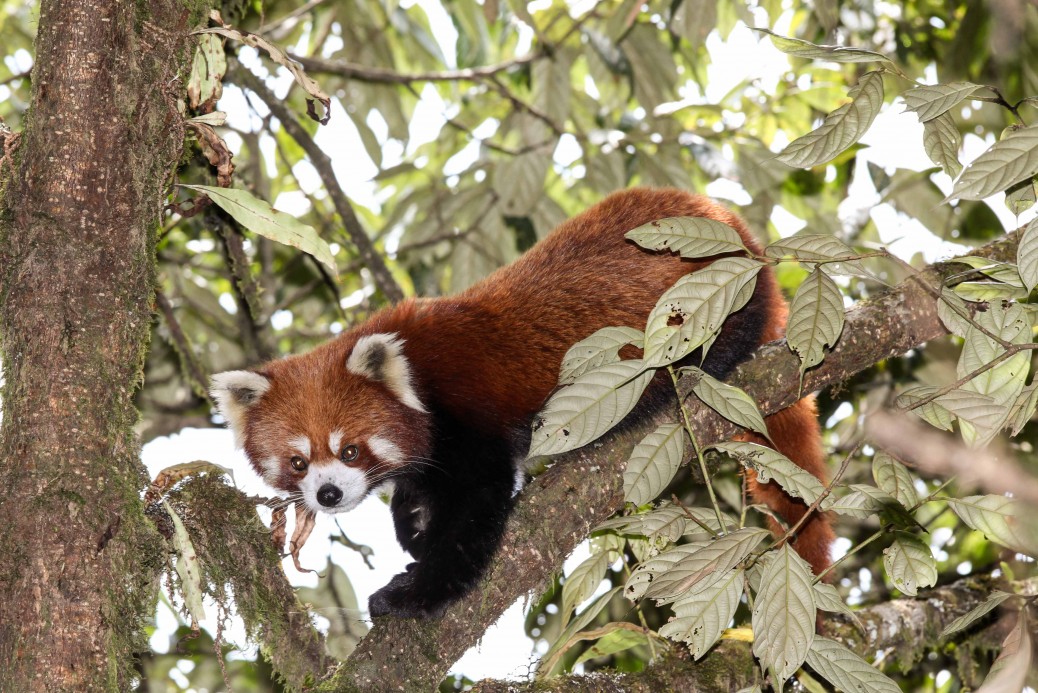
Nepal
I spent a four days in Nepal in June 1997 and returned in October 2012 for work and a weekend looking for Red Pandas.
Chitwan National Park
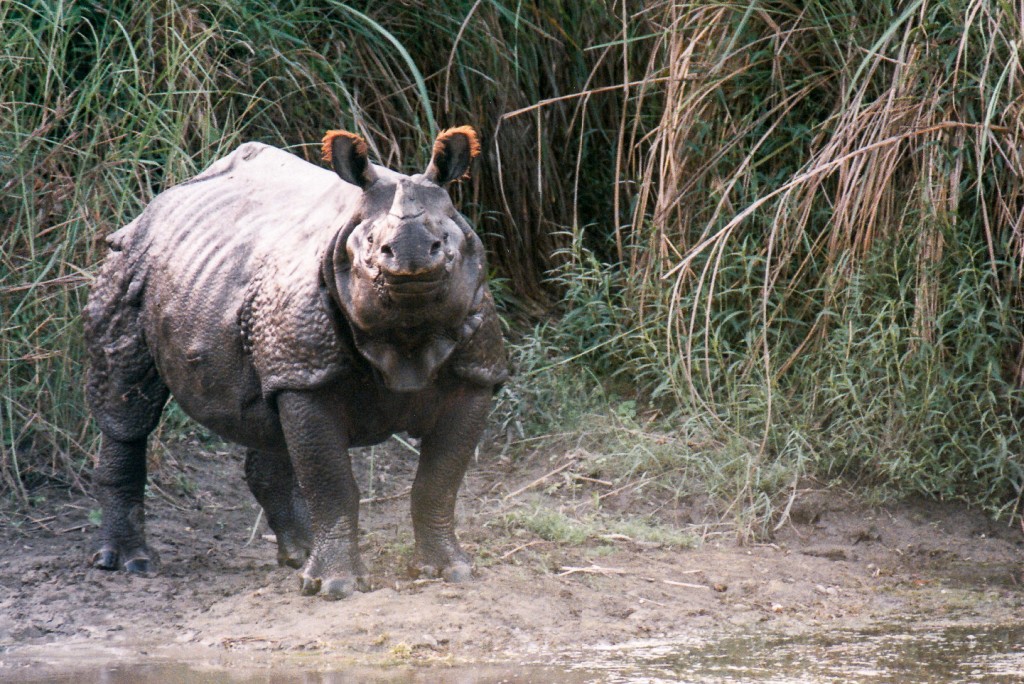
Indian One-horned Rhinoceros, Rhinoceros unicornis, Chitwan
Although June is the best time for Tiger watching in central India, it isn’t the best time to see mammals in Nepal. The grass in Chitwan National Park was pretty long, but I went primarily to see Indian Rhinos. It’s a nice park, and reputedly particularly good for Sloth Bear. Royal Bardia National Park nearby (which I didn’t have time to visit) is supposedly good for Gangetic River Dolphins. In June 1997 I saw Indian Rhinoceros (common), Tarai Grey Langur, Rhesus Macaque, Wild Boar, Northern Red Muntjac, Sambar, Chital, Hog Deer.
Kathmandu
In June 1997 you could find roosting Indian Flying Foxes around the railings outside the Royal Palace. I didn’t see any bats in October 2012.
South-East Nepal
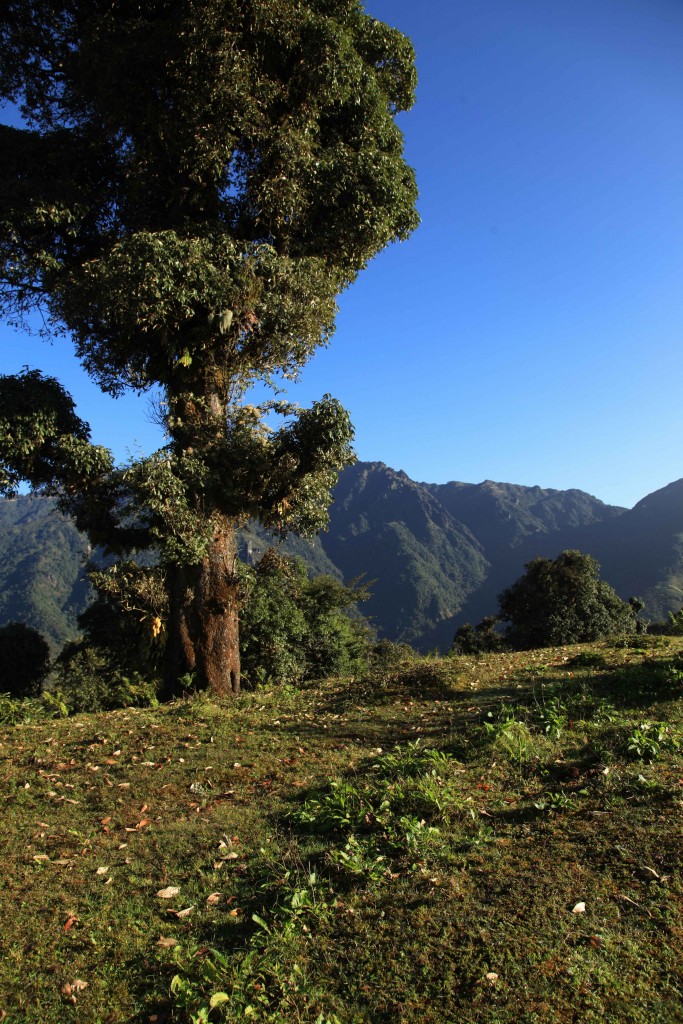
The Nepal Bengal Border
Red Pandas have, for a long time, been on my Top 20 Mammals To See list. I’d planned to go back to Sichuan to try again to see them until Steve Morgan’s and Phil Telfer’s trip report arrived in February 2012 with a report of a remote village in Nepal where the Red Pandas were easy to see. So I got in touch with the Red Panda Network immediately and met Emma Dale, one of their Australian volunteers, when I was in Brisbane. All I needed now was an opportunity to visit Nepal to see the only mammal that my daughter thinks give a Koala a run for the money in the adorable stakes. And in October 2012 the opportunity arose when I visited Kathmandu to organise a conference.
The Red Panda Network (RPN) works to protect the Red Panda and it’s rapidly dwindling mountain forest habitat that’s also home to other endangered species. They have been working in Eastern Nepal for a decade and have developed a seemingly close relationship with the local population and forest guardians who help monitor the pandas. To benefit the local population and promote sustainable tourism in the area, RPN organise (typically two week long) eco trips to the region, which include 11 days in Red Panda habitats and days hikes in the beautiful mountains.
Luckily for me custom tours are also possible: I didn’t have a week; I barely had a long weekend. And so after some negotiating around squeezing the itinerary until the pips squeaked, I was on a four day trip from Kathmandu, that would spend 48 hours in Red Panda habitat. If I had Phil and Steve’s luck I’d be fine. And like Phil and Steve I was pleased with the ease and efficiency of working with the RPN. I dealt mainly with Dirk Kloss the new CEO who is based in California, and with Rajiv Paudel who runs the Nepali operations. Both were excellent.
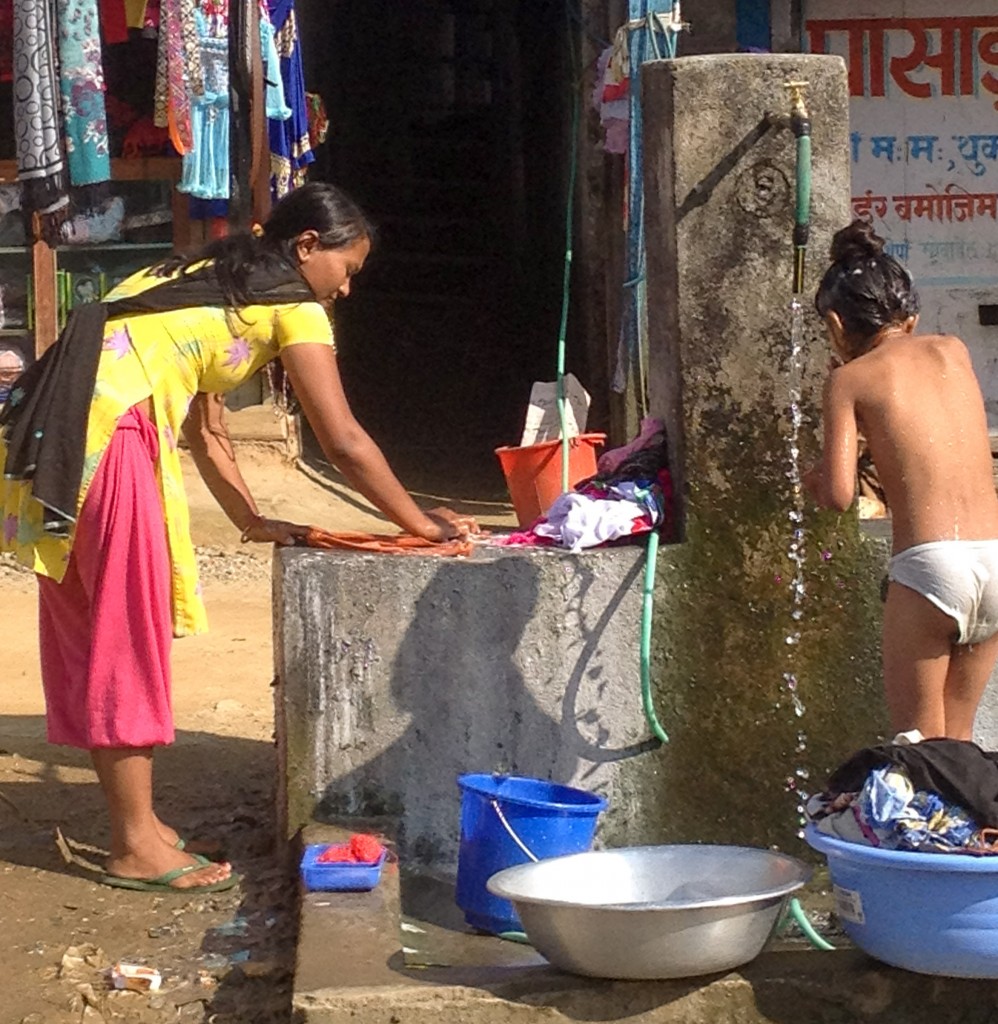
The road to Dobate
It took almost 24 hours to reach Kathmandu from New York. Rajiv met me at the airport and we had a few hours to kill before the domestic flight which is more often delayed than not. We went to Fire N’ Ice Pizza in downtown Kathmandu. Perhaps not the most traditional Nepali eatery but the coffee was really very good. Better than most I’ve had in New York (not that that is much of a bar to clear). And they had wifi.
The 12.30 flight to Bhadrapur became the 13.30, the 14.10, the 15.30 and finally the 15.50 departure. I passed out on the plane and woke up for five minutes at Badrapur to climb into a car. We reached the town of Ilam four hours later and stayed at Chiyabari Cottage. As Phil and Steve noted the mattresses weren’t the thickest I’ve slept on, but a bed of nails would have been comfortable after 40 hours travelling. Plus the beer was cold, the water was hot and the wifi was working.
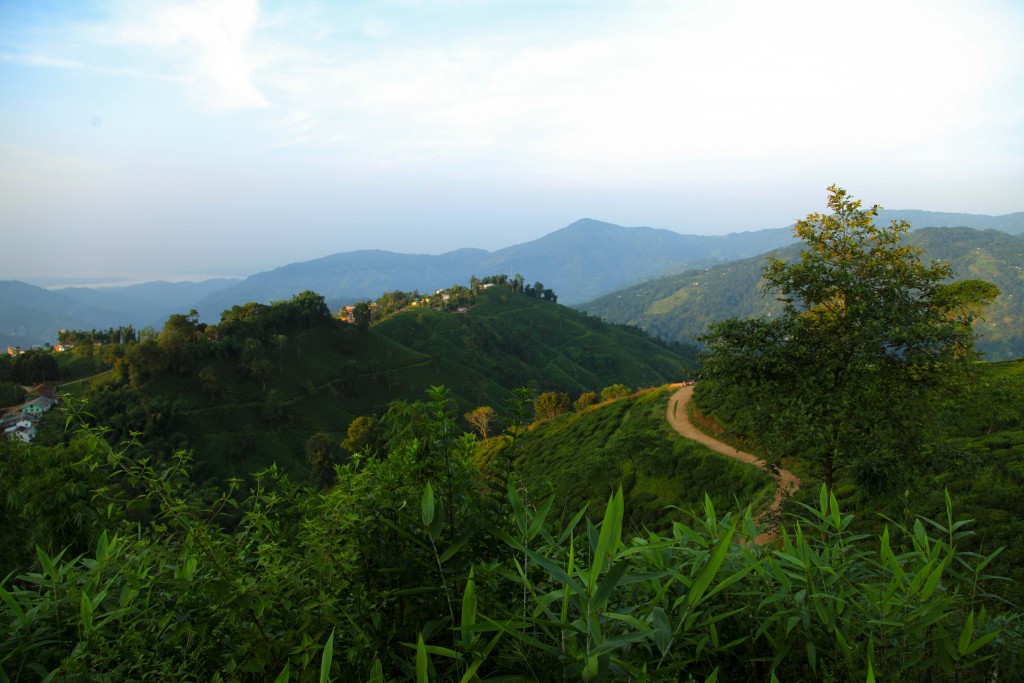
Ilam tea plantations
We left at 8 a.m. the next morning to drive the four hours to Dobate Village, one of RPN’s centres for Red Panda watching, and where they had a guesthouse and local guides. In fact RPN has set up teams and trails in Red Panda watching areas in three districts of Eastern Nepal and they recommended Dobate was the best place for me to visit given my lack of time.
The road was bad. Worse than bad. On a scale of 1 to 10, where 10 is Interstate and 1 is impassable, it would be a 0.5. A full 1.5 points below shithouse. But the scenery was beautiful. All Himalayan forests, mountain peaks, colourful saris and smiling children.
The drive to Dobate ought to take four hours. There had been a landslide so we drove for 3.5 hours – to the other side of the mountain – then hiked another 1.5 up to the village. Pandas and landslides go together for me like Paris and problems. When I went to see Giant Pandas in 2005 we had to walk 25 km into the camp because of a landslide. There we had donkeys to carry the bags. Here we had a lone Nepali who took a shortcut and got there before we did. Along with at least 80lbs of luggage.
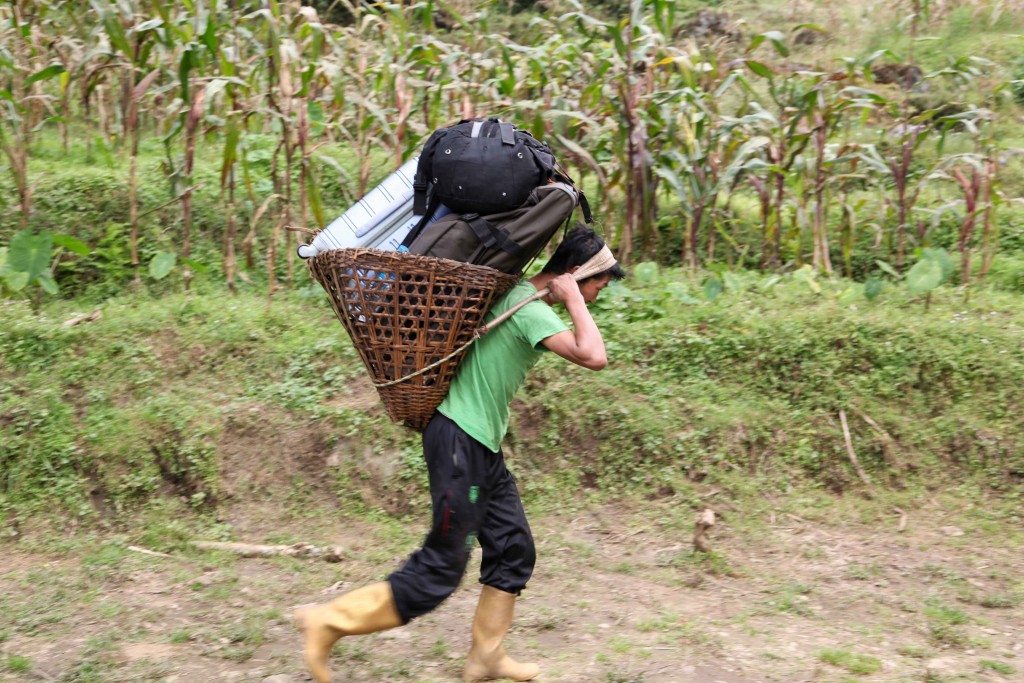
I reckon the bags weighed more than he did
Dobate is more like a movie set than reality. It is beyond picturesque, perched on a mountain ridge with high peaks in every direction. I guess if you aren’t super friendly you are asked to move to a neighbouring village: everyone smiles; always. The little homestay is cute and we had delicious steamed dumplings for lunch.
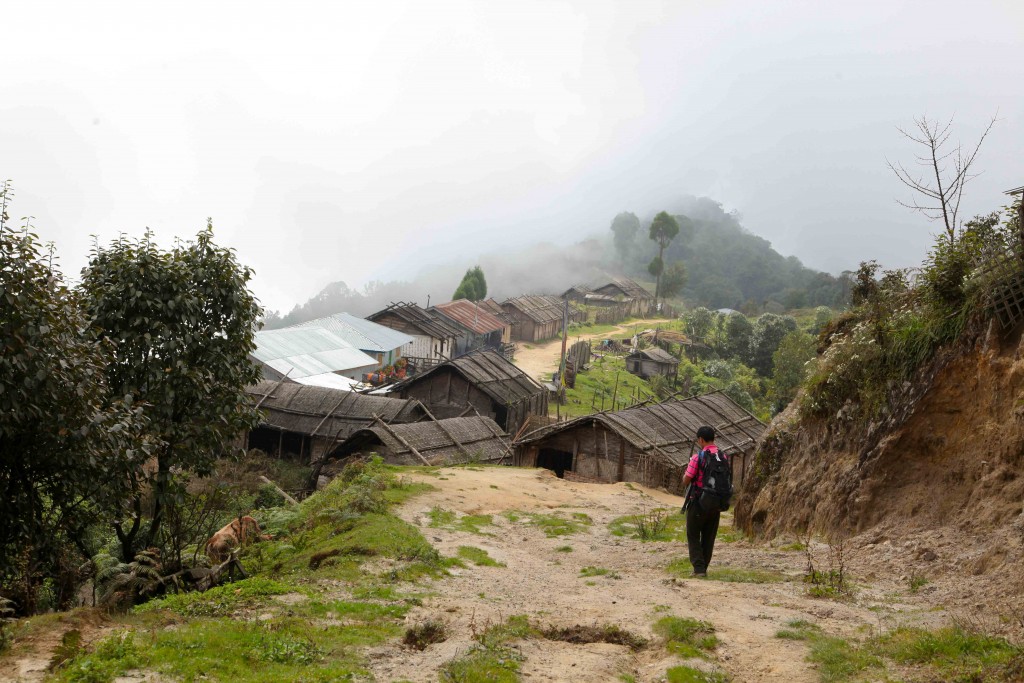
Dobate. The main drag. The only drag.
Dobate afternoons appear always to be cloudy and not the best time to look for Red Pandas. But we set off at 3 p.m. anyway and spent a couple of hours looking around the forest north of the village.
There are thought to be five Red Pandas currently living in a belt of forest adjoining the village (a belt running about 5 km along the ridge and 1 km down the mountain). The two trackers modus operandi is to move through the forest at speed looking for fresh scats. We would follow until they found something, then wait at a strategic spot while they moved more methodically through the forest trying to find a panda. It is beautifully diverse forest and open enough to be able to move through quite easily. The only difficulty is the steepness and the loose soil. The two forest guardians had been trained by – and worked with – RPN for years. They took time off their main jobs to track Red Pandas for me.
We couldn’t find any fresh panda activity and I was feeling less optimistic than I had been at lunchtime. Rajiv and I headed back to the homestead – seeing a lone Tarai Gray Langur (Semnopithecus hector) – near the village (apparently a lone animal often hangs out here). We set some small mammal traps. Just on dusk the two local trackers Sangay and Phinju got back, and were pleased to have found some scats that were only a few days old. Things were looking up for the morning, when the weather would also be clear and the pandas more active.
I was asleep by 8 p.m. after rice, daal and strong beer.
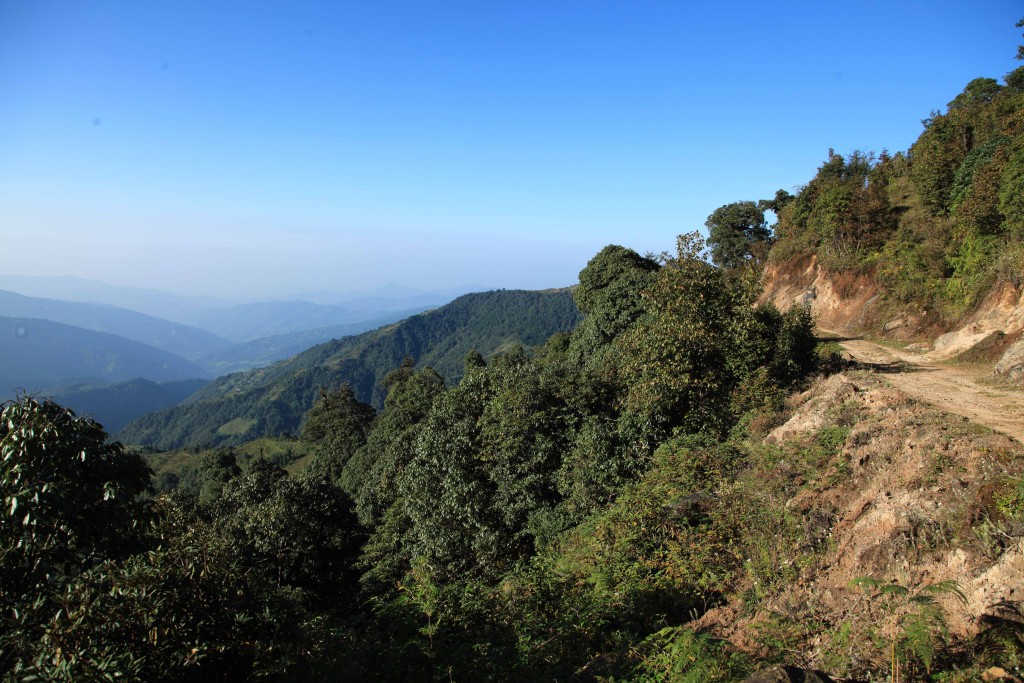
At 6 a.m. the next morning I could appreciate the view for the first time. There are many words to describe it. Holy Shit are the first two that sprang to my mind. After breakfast and checking the small mammal traps we were heading back to the forest at 7.15 a.m. Fifteen minutes later we were looking at the scats that they’d found last night. They seemed to have come from a mother and cub about three or four days earlier.
Rajiv and I were sent to an open area of the forest (where Rajiv’s cell phone would work) and were told to wait for further instructions. None came until 11.30 a.m. when the trackers reappeared. They hadn’t found any more scats. My pessimism grew.
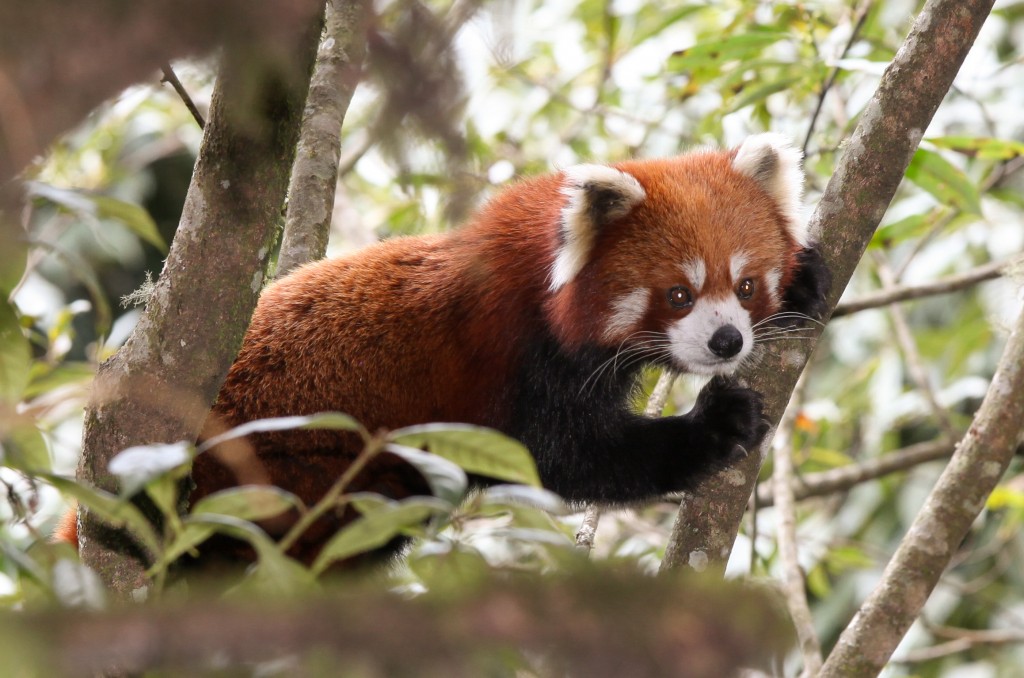
Red Panda, Ailurus fulgens
It was a 20 minute walk back to the village and I passed the time wondering how to improve our chances for the afternoon and the following morning as we needed to leave the homestay at lunchtime.
Just before we were back in the village I got a whistle from Rajiv followed by some hand-flapping. I thought it must be a squirrel so I wandered back but the hand flapping grew more insistent and so did my pace. I arrived perplexed by what was causing the fuss. Phinju said “Panda”. I wouldn’t believe him. But there it was, a Red Panda, 20 metres from the road in the top of a tree. Once I knew it was there it was quite easy to see, but how Phinju had spotted on the move I don’t know!
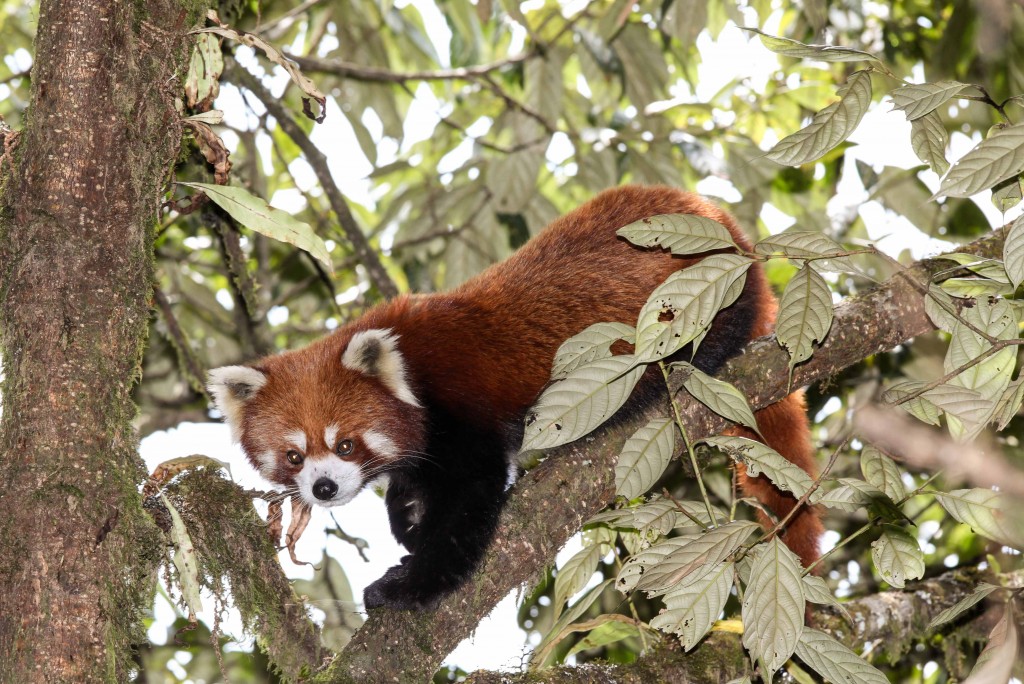
Red Panda, Ailurus fulgens
A truly beautiful animal and seemingly unworried by our presence. We watched it for over an hour.
I didn’t do much for the rest of the day and a half-hearted spotlight walk at dusk for 20 minutes found nothing other than a couple of bats zipping around.
The next morning we spent a few hours in the forest trying to find again the panda but couldn’t, though we did watch a troop of Assamese Macaques (Macaca assamensis) come by.
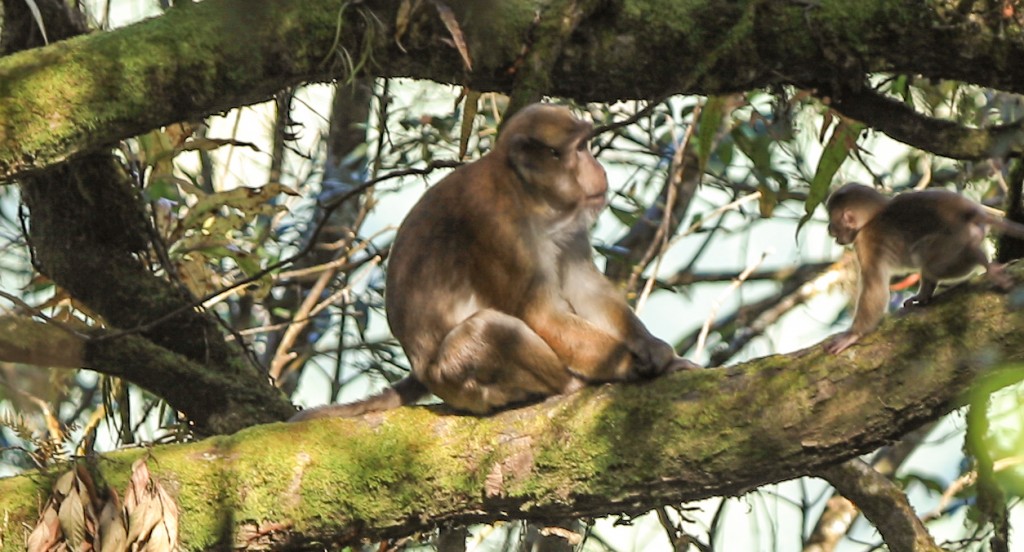
Assamese Macaques, Macaca assamensis
I was happy with the sightings I’d had so we went back at 11 a.m. for an early lunch and the bumpy road back to Ilam.
After lunch we took a short cut down the mountain where the car should have been waiting. We had to wait two hours for it to arrive, which it eventually did along with a complicated story about several flat tyres. Unfortunately the Ilam Cottage Hotel was full that night and so we slept in an abysmal hotel in the middle of Ilam. It assured us it had wifi and hot water when we checked in (neither of which were true). It did however have wafer thin mattresses, rooms overlooking a town square that was a 4 a.m. meeting place for the local trucks, and some particularly gruesome cockroaches. If you take the trip then I’d suggest you encourage the Red Panda Network to book the infinitely superior Chayabari hotel in advance (or arrange the trip with more than the one week notice I gave them!).
Small Mammals
I set 20 small mammal traps around the guest house for a couple of nights.
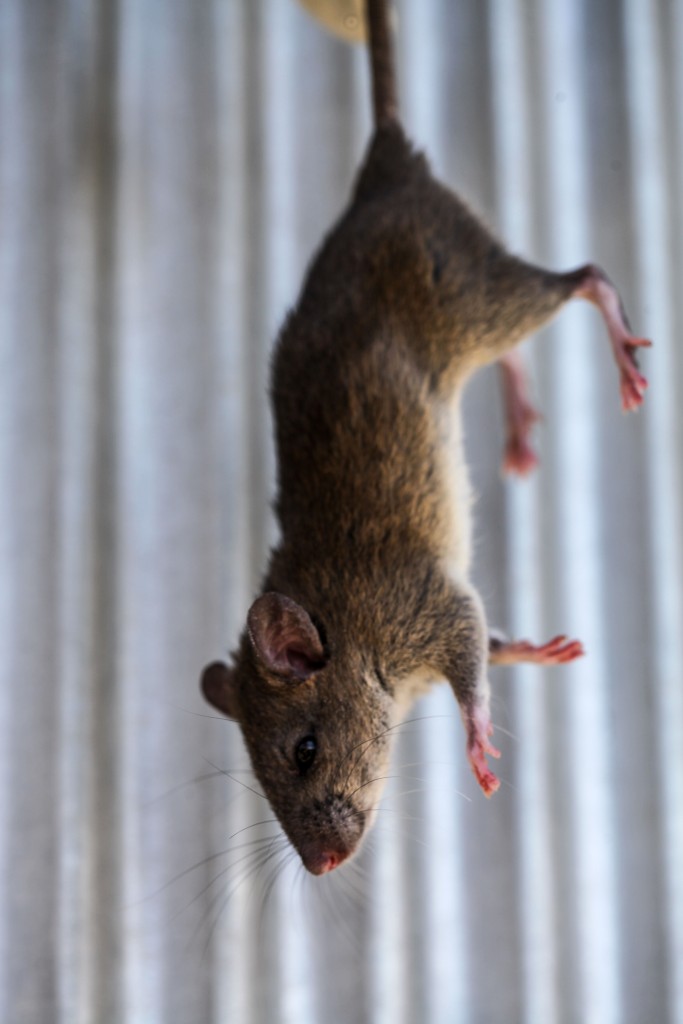
Himalayan Rat, Rattus pyctoris
I should probably have ventured further into the forest to catch interesting species. But despite my laziness we did catch my first Himalayan Rat (Rattus pyctoris) near the guest house, several mice – some may have been house mouse but at least one was a Cook’s Mice.
And what I believe was my first Himalayan White-bellied Rat (Niviventer niviventer).
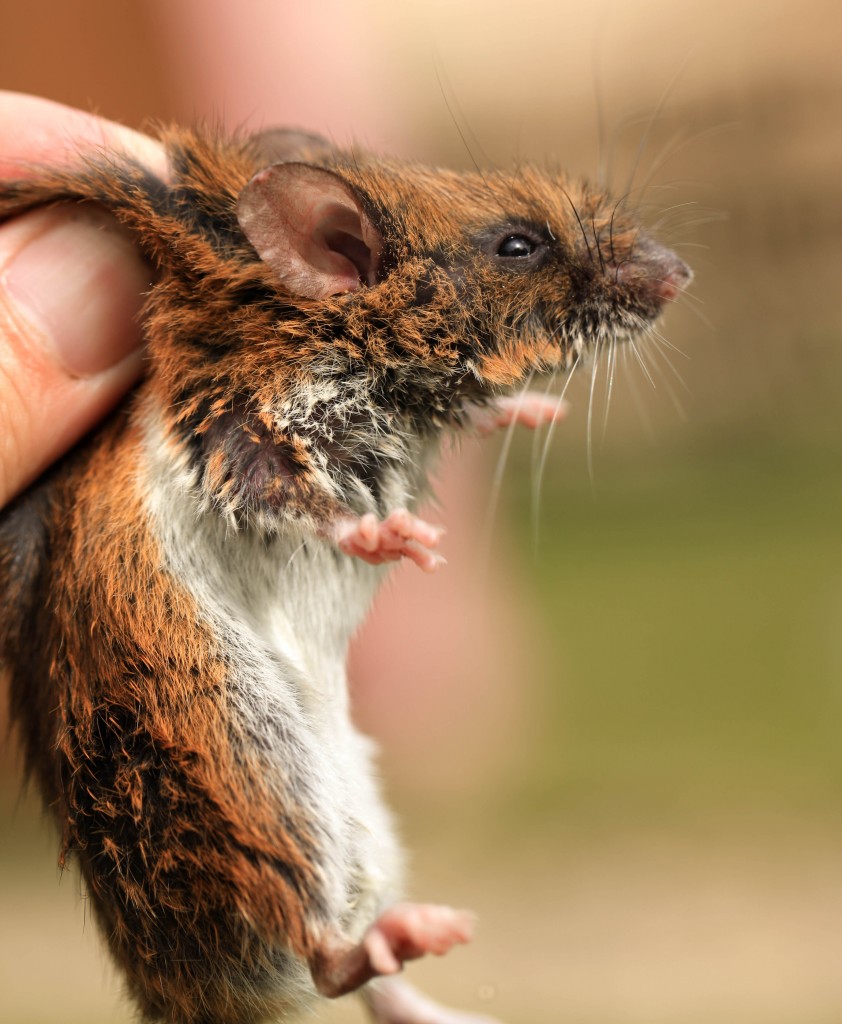
Himalayan White-bellied Rat, Niviventer niviventer
All in all a great trip, done at speed and at the last minute, to a remote area. But the journey time was well worth it for the hour I spent with the Red Panda. I’d like to give a big thank you to the Red Panda Network and especially to Sangay and Phinju who were remarkably adept at finding the animals, to Rajiv for all his assistance and company, and Dirk for his help before I arrived in arranging such a tight – but successful – itinerary.
Community Reports
Terai (lowland Nepal), 2024: Zhou Fangyi, 13 days & 20 species including Ganges River Dolphin, Sloth Bear and Tiger.
Langtang National Park, 2023: Royle Safaris, 10 days & 12 including Himalayan Red Panda, Hodgson’s Giant Flying Squirrel and Yellow-throated Marten.
Chitwan NP and eastern Nepal for Red Pandas, 2023: Mike Hoit, 3 weeks & 25 or so species including Tiger, Western Red Pandas, Woolly Hare and Yellow-bellied Weasel.
Red Pandas at Habre’s Nest, 2023 : David Andrews, 2 weeks & 8 species including Red Panda, Himalayan Goral and Grey-heaed Flying Squirrel.
Chitwan, 2022: Royle Safaris, 11 nights & 16 species including Leopard, Tiger and Sloth Bear.
Langtang National Park, 2020: Royle Safaris, 10 days & 21 species including Himalayan Musk Deer, Indochinese Clouded Leopard (though only a guide saw it) and Yellow-bellied Weasel.
Red Panda Quest (Habre’s Nest, near Singalila NP), 2019: Mac Hunter, 1 weeks and some nice mammals including several Red Pandas, Bhutan Giant Flying Squirrels and a Fishing Cat in Kolkata.
Singalila National Park, 2018: Naturetrek, 12 days & 3 species including Red Pandas and Yellow-throated Martens.
Chitwan, 2018: Royle Safaris, 8 days & 18 species including Sloth Bear and Leopard.
Chitwan, 2018: Royle Safaris, 11 days & 25 species including Sloth Bear and Fulvous Fruit Bat.
Nepal, 2017: Royle Safaris, 11 days & 24 species including Sloth Bear, Tiger and Woolly Horseshoe Bat.
Red Pandas, 2016: Richard Hoyer’s account of a successful trip to see Red Pandas.
Red Pandas, 2015: Royle Safaris, 7 days & 6 species including Red Panda.
Nepal, 2014: Philippe and Yvette Orsini, 2 weeks & 16 species during a (predominantly walking) safari, including Tiger & Gaur.
India & Nepal (Kanha, Kaziringa & Chitwan), 2014: Royle Safaris, 19 days & 25 species including Tiger and Perny’s Long-nosed Squirrel.
Red Pandas, 2013: Royle Safaris, 9 days & 10 species including Himalayan Thar and Bhutan Giant Flying Squirrel, but no Red Pandas.
Nepal, 2013: Jeff Blincow, 9 days & 22 species including Sloth Bears, Smooth Coated Otters and some great pictures.
Nepal, 2013: Andrew Stanbury, 2 weeks & species including Red Panda and Tiger.
Nepal, 2013: Naturetrek, 10 days & 19 species including Gangetic Dolphin, Tiger and Orange-bellied Squirrel.
Chitwan, 2012: Royle Safaris, 11 days & 20 species inOrange-bellied Squirrelcluding Little Nepalese Horseshoe Bat and Jungle Cat.
Nepal, 2012: Steve Morgan, 1 week & 5 species including the target Red Panda.
Nepal, 2011: Royle Safaris, 11 days & 10 species including a Leopard.
Nepal & Bhutan, 2011: Royle Safaris, 22 days & 22 species including Jungle Cat and Sloth Bear.
Nepal, 2010: Matthew and Maureen Hart, 6 weeks mainly trekking & 17 species including Himalayan Tahr.
Nepal, 2004: Richard Webb, 1 week and 19 mammals.
Nepal and Thailand, 2000: Steve Anyon-Smith, 4 weeks & 22 mammals.
Nepal and Thailand, 1998: Steve Anyon-Smith, 4 weeks & 27 mammals.
Nepal, 1995: Steve Anyon-Smith, mainly birding but some nice mammals including a Himalayan Tahr.
Also See
Pika species from the Langtang Valley, October 2024
Mainland Clouded Leopard (secret) site, March 2019
Ganges River Dolphin and other species – including Fishing Cat – near Koshi Tappu January 2016


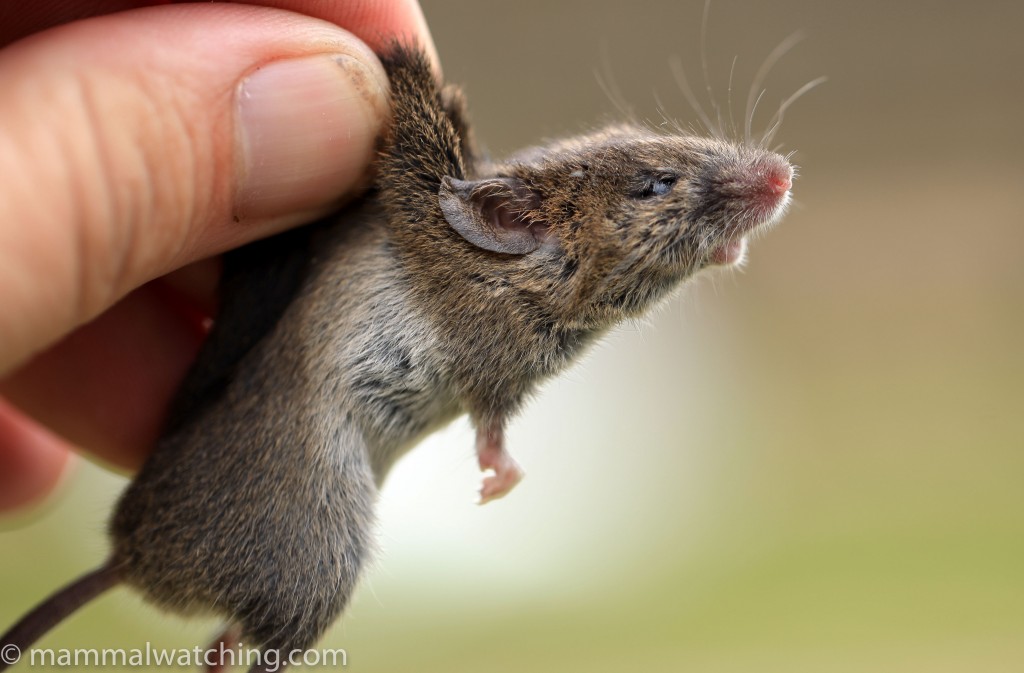
Leave a Reply
You must be logged in to post a comment.